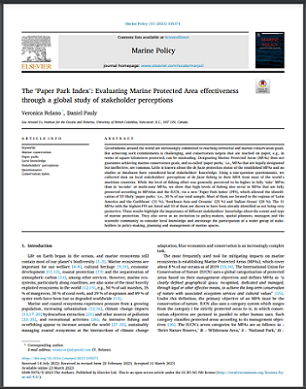
Governments around the world are increasingly committed to reaching terrestrial and marine conservation goals. But achieving such commitments is challenging, and conservation targets that are reached on paper, e.g., in terms of square kilometers protected, can be misleading. Designating Marine Protected Areas (MPAs) does not guarantee achieving marine conservation goals, and so-called ‘paper parks,’ i.e., MPAs that are legally designated but ineffective, are common. Little is known about the de facto protection status of the established MPAs and no studies or databases have considered local stakeholders’ knowledge. Using a one-question questionnaire, we collected data on local stakeholders’ perceptions of de facto fishing in their MPA from most of the world’s maritime countries. While the level of fishing effort was generally perceived to be higher in fully ‘take’ MPAs than in ‘no-take’ or multi-zone MPAs, we show that high levels of fishing also occur in MPAs that are fully protected according to MPAtlas and the IUCN, via a new ‘Paper Park Index’ (PPI), which allowed the identification of 55 likely ‘paper parks,’ i.e., 30 % of our total sample. Most of them are located in the regions of ‘Latin America and the Caribbean’ (31 %), ‘Southeast Asia and Oceania’ (25 %) and ‘Indian Ocean’ (20 %). The 11 MPAs with the highest PPI are listed and 10 of them are shown to have been already identified as not being very protective. These results highlight the importance of different stakeholders’ knowledge about the extent and type of marine protection. They also serve as an invitation to policy-makers, spatial planners, managers and the scientific community to consider local knowledge and encourage the participation of a wider group of stakeholders in policy-making, planning and management of marine spaces.












